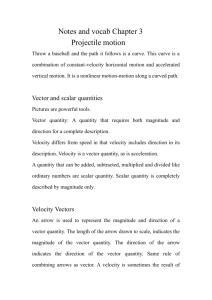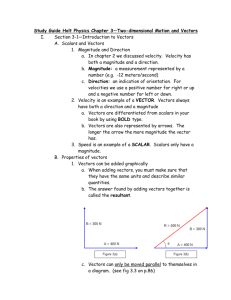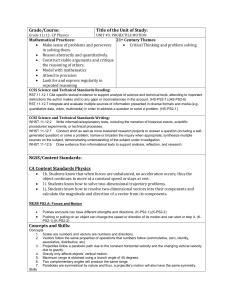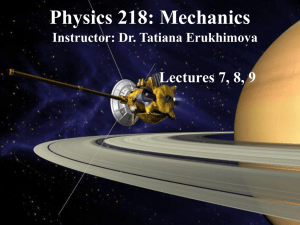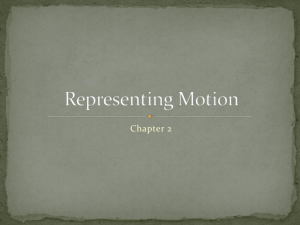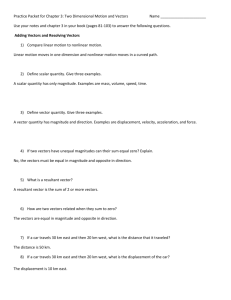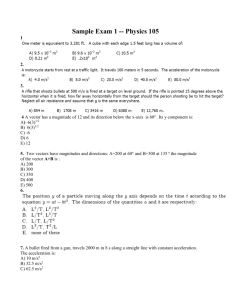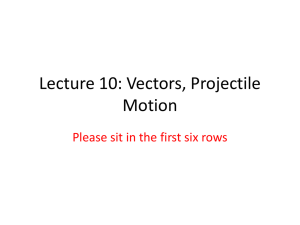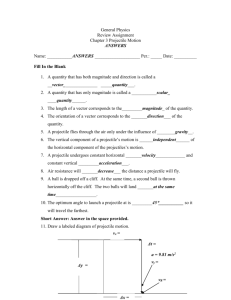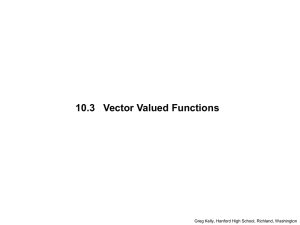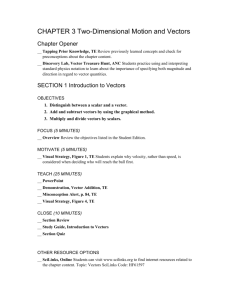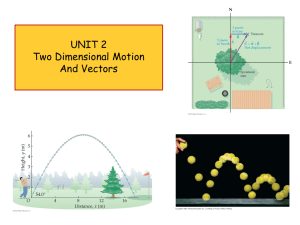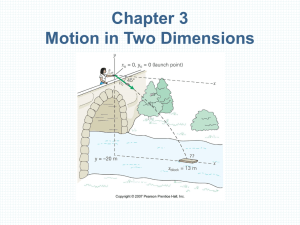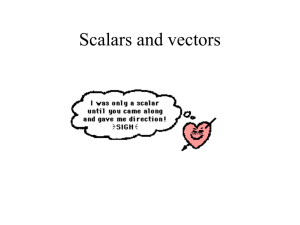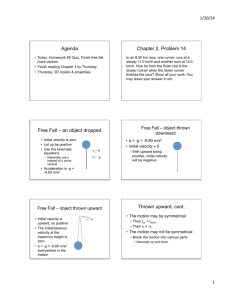Chapter 3 Projectile Motion
advertisement
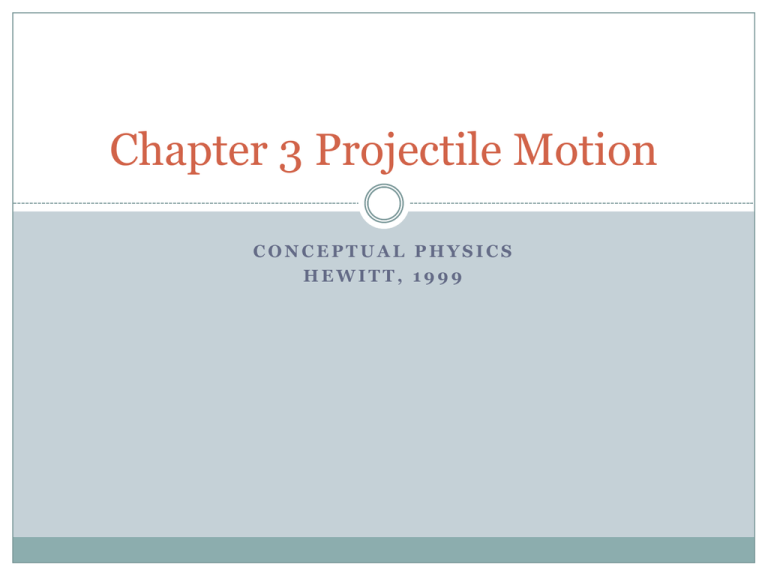
Chapter 3 Projectile Motion CONCEPTUAL PHYSICS HEWITT, 1999 3.1 Vector & Scalar Quantities Vector- magnitude and direction (23m/s N) Only units that can have direction can be vectors Velocity (speedometer & compass) Scalar- magnitude only (23m/s, 34°C, 56s, 3L, 85kg) Some units simply can’t have direction, like time and temperature Speed (speedometer only) 3.2 Velocity Vectors We use an arrow to represent velocity vectors Arrow shows direction, length shows relative magnitude We can then add, subtract or use other math to find the sum of all of the vectors If drawn correctly, we can just use a ruler! Draw to an appropriate scale (1cm=10m/s?) Using simple trigonometry (remember a2+b2=c2?), we can find the sum of non-linear vectors PhET “Vector Addition” Vector Addition By placing vectors tail-to-tip, we can line them up to add them! Rectangle & Vectors A rectangle (or a right triangle) helps us resolve vectors Diagonal (or hypotenuse) is the resultant Parallelogram can be used of the rectangle doesn’t have 90° angles Special Angles 3,4,5 triangle- angle between 4 & 5 is 37.5° 1,1,√2 triangle- angle between 1 & √2 is 45° Gives the maximum range (or distance) when launching/throwing Example Problem If I row my boat north at 80m/s and am caught in a east cross current of 60m/s, what is my actual velocity? 802+602 = c2 √(802+602) = 100m/s This is a 3,4,5 triangle, so our angle is 37.5° Magnitude and direction Direction is stated as 37.5° from some reference line (usually the horizontal or vertical) Final answer: 100m/s 37.5° East of North 3.3 Components of Vectors Component- a pair of vectors that can describe a single vector Vertical and Horizontal components Resolution- the process of breaking down a vector into its components CD 3-2 (p9 only) 3.4 Projectile Motion Projectiles-Anything that moves vertically (due to earth’s gravity) and horizontally (independent of g) Dimensional independence- Horizontal motion is independent of gravity CD 3-1 (p7-8) 3.5 Upwardly Launched Projectiles If the object followed a straight line, then the vertical distance beneath the line would be the distance that the ball would have fallen if dropped from that height Remember d= ½gt2? Velocity up is opposite of velocity down at the same elevation Always ignoring air resistance Would slow down the projectile Figure 3.15 Projectile Resolution Projectile Resolution Look at the horizontal components. Do they ever change? What does that tell you? Look at the vertical velocity components for the same height. They should be the same, just in opposite directions. What does this say about velocity? These paths ignore air resistance. What would the path actually look like if air resistance was added? Would the object go farther/higher or shorter/lower? CD 3-2 (p10 only) Physlet I3.4, E3.5, P3.8 3.6 Fast-Moving Projectiles- Satellites Satellite- an object that is really falling toward the earth as fast as the earth is moving away from it If you throw a ping-pong ball, it won’t go very far. If you throw a baseball very fast; it will travel very far. What about shooting a bullet? It travels even farther. “Falls” above the atmosphere to avoid air resistance A rocket can “throw” itself fast enough to travel to the end of the earth, but then the earth has moved, so it keeps falling… Satellite Motion Homework & Assessments Review Questions 1-18 Plug & Chug 1-10 Think & Explain 1-4 Chapter 2-3 Exam

